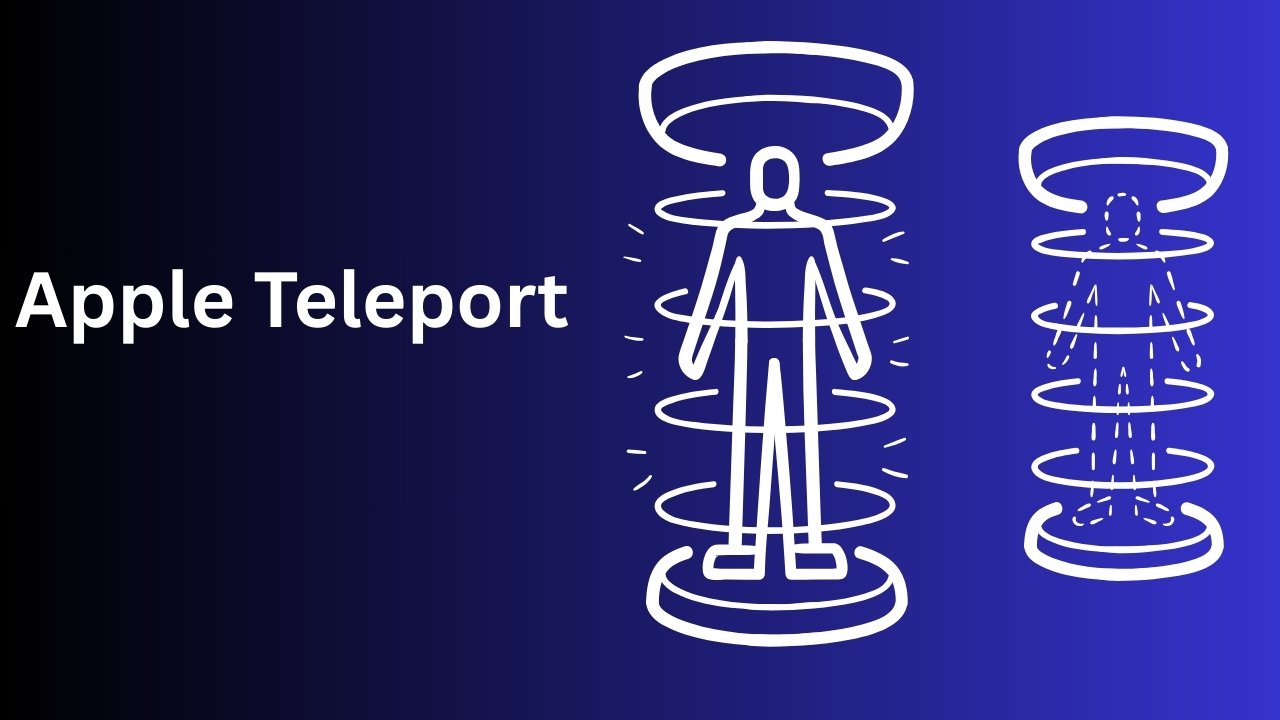In the ever-evolving landscape of technology, Apple has consistently been at the forefront of innovation. One of the most intriguing concepts to emerge in recent discussions is “Apple Teleport,” a term that has sparked curiosity and speculation among tech enthusiasts. While the idea of teleportation has long been a staple of science fiction, recent advancements in technology have led to discussions about its feasibility and potential implementation.
Understanding the Concept of Apple Teleport

The term “Apple Teleport” has been circulating in various tech forums and social media platforms, often accompanied by speculative discussions and conceptual videos. At its core, the concept revolves around the idea of instantaneous travel or transmission of data, experiences, or even physical presence from one location to another, leveraging advanced technologies.
It’s important to note that, as of now, there is no official product or announcement from Apple regarding a teleportation device. The discussions and content available online are largely speculative or conceptual in nature.
Also Read: Nasik Fatafat Lottery | EGERP Panipat | Gamerxyt.com Categories
Key Features and Functionality of Apple Teleport
Though still a conceptual innovation, Apple Teleport envisions a powerful blend of immersive technology and seamless connectivity. If developed, here are the key features and functionalities it could offer:
1. Instant Virtual Presence
Apple Teleport would allow users to appear in any supported digital environment instantly—whether it’s a meeting room, classroom, or a remote tourist location—providing a sense of being there in real-time.
2. High-Fidelity AR & VR Integration
Leveraging Apple’s advancements in augmented reality (AR) and virtual reality (VR), the system could create lifelike 3D spaces with natural motion tracking and ultra-clear visuals for total immersion.
3. Real-Time Spatial Audio & 3D Video
Apple Teleport may feature spatial audio and 3D video, making conversations and environments sound and feel real, as if you’re physically present with others.
4. Advanced Haptic Feedback
By integrating next-gen haptic feedback, users could simulate the sensation of touch—feeling textures, movements, or even handshakes—across virtual spaces.
5. End-to-End Encrypted Teleportation Sessions
Privacy would be paramount. Apple Teleport would likely employ end-to-end encryption to secure every virtual interaction, keeping communications private and secure.
6. Ultra-Fast Connectivity with AI Optimization
Powered by Apple Silicon and optimized for ultra-low latency, the platform could use AI-driven bandwidth control for stable and smooth teleportation experiences even in moderate network conditions.
7. Neural Engine Integration for Gesture and Emotion Recognition
Apple’s Neural Engine could analyze user gestures, facial expressions, and emotions in real-time—enhancing the realism and responsiveness of virtual interactions.
8. Cross-Device Compatibility
Apple Teleport might seamlessly sync across all Apple devices—from iPhones and iPads to MacBooks and Apple Vision headsets—ensuring a consistent and accessible teleportation experience.
9. Multi-User Environments
Whether for education, business, or entertainment, the feature could allow multiple users to “teleport” into the same digital space, interact naturally, and collaborate efficiently.
10. Teleport Explorer for Virtual Travel
An optional feature might include an Apple Teleport Explorer, letting users experience historic landmarks, natural wonders, or global cities virtually—from the comfort of their home.
These key features position Apple Teleport not just as a tech novelty but as a possible game-changer in how we connect, learn, and experience the world.
Must Read: Influencers GoneWild | Seva Sindhu Portal Karnataka | Jansunwai Portal UP
The Technological Foundations
While the notion of physical teleportation remains within the realm of science fiction, several technological advancements hint at the possibilities of creating immersive experiences that simulate aspects of teleportation:
1. Augmented Reality (AR) and Virtual Reality (VR)
Apple has made significant strides in AR and VR technologies, aiming to create immersive experiences that can transport users to different environments virtually. These technologies can simulate the sensation of being in a different location, offering a form of “virtual teleportation.”
2. High-Speed Data Transmission
The development of high-speed data transmission technologies allows for real-time sharing of high-definition audio and video, enabling seamless virtual communication and collaboration across vast distances.
3. Advanced Haptic Feedback
Innovations in haptic feedback technology can simulate the sense of touch, adding another layer of realism to virtual experiences and enhancing the feeling of presence in a different environment.
Potential Applications
While physical teleportation is not currently feasible, the technologies mentioned above can be applied in various ways to simulate aspects of teleportation:
1. Virtual Meetings and Collaboration
Enhanced AR and VR technologies can facilitate virtual meetings where participants feel as though they are in the same room, regardless of their physical locations.
2. Remote Education and Training
Immersive virtual environments can provide students and trainees with realistic simulations, allowing for effective learning experiences without the need for physical presence.
3. Virtual Tourism
Users can explore distant locations virtually, experiencing sights and sounds as if they were there, which can be particularly beneficial for those unable to travel.
Ethical and Privacy Considerations
As with any technological advancement, the development and implementation of immersive virtual experiences raise important ethical and privacy concerns:MakeUseOf
- Data Security: Ensuring that user data, especially sensitive information, is protected against unauthorized access and breaches.
- Consent and Control: Users should have control over their virtual presence and the data shared during immersive experiences.
- Digital Well-being: Balancing virtual experiences with real-world interactions to maintain mental and emotional health.
Conclusion
While the concept of “Apple Teleport” remains speculative and conceptual, it reflects the growing interest and advancements in technologies that aim to bridge physical distances through immersive virtual experiences. As AR, VR, and related technologies continue to evolve, they hold the potential to transform how we interact, learn, and experience the world around us.
FAQs For Apple Teleport
Q1. What is Apple Teleport?
Apple Teleport is a futuristic concept that imagines instant virtual presence through immersive technology.
Q2. Is Apple really making a teleportation device?
No, Apple has not officially announced any real teleportation device as of now.
Q3. Can Apple Teleport let me travel instantly?
Not physically, but it may someday simulate the feeling of being somewhere else instantly.
Q4. Is Apple Teleport based on AR and VR?
Yes, the concept heavily relies on advanced AR/VR to create teleportation-like experiences.
Q5. Will Apple Teleport be available as an app or device?
There’s no product yet, but future Apple innovations might include teleportation-style features.
Q6. Is teleportation scientifically possible today?
Teleportation of physical matter isn’t currently possible, but virtual presence is advancing fast.
Q7. Can I use Apple Teleport for virtual meetings?
Theoretically, yes—it could redefine how we meet and collaborate remotely.
Q8. How is Apple Teleport different from FaceTime?
Unlike FaceTime, Apple Teleport could place you “inside” another environment, not just on a screen.
Q9. Will Apple Teleport be safe to use?
If ever developed, user safety and data privacy would be top priorities for Apple.
Q10. Is Apple Teleport science fiction or future reality?
It’s science fiction for now—but a future reality that’s closer than you might think.


